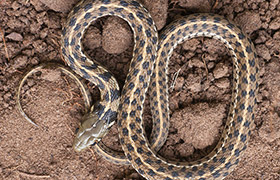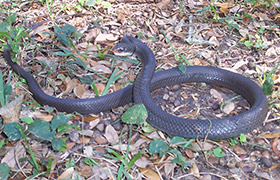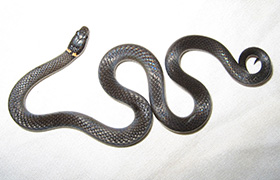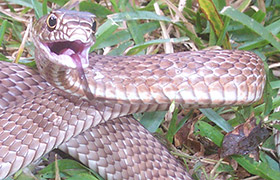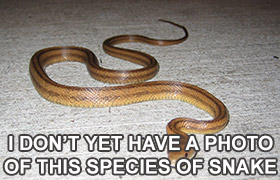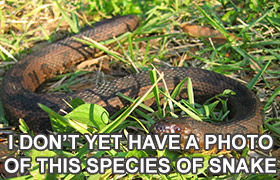Common Snakes of California: California is a state that offers many different landscapes. There are pine forests and seasonal lakes bringing new wildlife to the mix with the changing seasons. There are also mountainous regions alongside fertile farmlands, dry and arid deserts, and more. When you’re looking at natural snake habitats, California pretty much has them all.
There are over 33 different species of snake in California although only six of them are known to be venomous. The others, the non-venomous ones, will rarely pose a threat if you leave them alone to do their own thing. If they enter your property, they will generally move along on their own although occasionally you may require intervention from a professional snake removal expert.
Call the below number for snake removal help in your area:
Los Angeles: 213-233-9495
Oakland: 415-881-4347
Riverside: 951-666-2555
Sacramento: 916-226-9530
Salinas: 831-585-1640
San Diego: 858-257-3420
San Jose: 408-550-6660
These are the common snakes of California you may encounter:
Garter Snake: Common all over the state of California, garter snakes are a harmless snake with either two or three light bands or stripes, usually with quite a large and wide head compared o the other species of snake.
Also known as the garden snake, the name will give you some idea of where you’ll find it - many home owners report garter snakes in their yards from time to time. If you leave them alone, they’ll just slither on by without bothering you too much. Plus they’re only small!
Western Racer: You’ll find the western race snake pretty much everywhere in California, a snake that can be brown, green or grey in color, with the younger snakes being lighter in color than their older counterparts.
A snake that can climb and loves daylight, it’s a fast-moving animal that you’ll easily miss if you don’t know what you’re looking for. It generally only grows to a maximum of three feet in length making it relatively harmless. It feeds on larger insects, frogs, turtles, other snakes, eggs, lizards, birds and small mammals. As well as the western race, you’ll also find the striped racer is another of the common snakes of California.
Ring-Neck Snake: A snake with a ring around its neck as the name suggests, the ring-neck snake is a nocturnal snake meaning that there’s a good chance you won’t ever see one. Secretive, fast-moving and just the tiniest bit venomous, they won’t pose a threat to human life, plus they’re relatively small so would prefer to back away than stay and fight. They’re a pretty adaptable snake that can survive in a wide range of habitats, although are mostly found in rocky hillsides and also in watery-areas for their food source - earthworms, slugs, salamanders, frogs, lizards and even other smaller species of snake.
Coachwhip: Also known as the racer snake, the coachwhip snake is another one that can come in many different formations of color and patterns. With darker heads and lighter bodies (think ombre), orange, yellow, brown, tan, banded darker stripes, and more designs, the snake is very active during the day and easily camouflages in sandy areas. Although less common, they can also be found in rocky and forested foothills.
Gopher Snake: This is one of the most common snakes of California and therefore the one you’ll be most likely to encounter. A harmless snake with no venom and one that is pretty active during the day, especially in the heat of summer, you’ll probably find one in your garden or yard. If you leave it (rather than try to grab it), it’ll slither away. This one isn’t looking for a fight.
Coming in a range of colors and patterns, the gopher snake (also known as the western pine snake, the western bull snake, the Pacific pine snake, and others) will usually grow to around 35 - 85 inches, and are a tan / light brown color with darker brown patches along the top and trawling along the sides.
Sharp-Tailed Snake: This one is commonly reported in properties, is not dangerous to humans and isn’t all that threatening to look at either. This snake is a tiny snake in comparison to some of the other common snakes of California, and are often spotted hiding beneath piles of leaves, within vegetation, in compost heaps, underneath rocky patches and more. During the spring and late winter, the sharp-tailed snake prefers sunny and moist, relatively open areas with larger hiding places so this is when you’ll more likely spot it.
California Kingsnake: A snake often confused with the highly venomous coral snake, the California king snake is NOT venomous and isn ’t even that dangerous to humans although will strike if cornered and / or threatened. Rarely growing to over 50 inches or so, the snake isn’t even that big a species, but can come in a pretty diverse range of colors and patterns. In coastal areas of California the snake is more striped with a yellow, pale belly. Head into Sacramento Valley and the snake has a darker belly with lateral stripes.
There are a number of other common snakes of California - 33 on the list to be exact. Many of them are snakes that prefer to dwell far away from human habitats meaning you’ll never need to worry about encountering. The above ones we’ve mentioned however, well they have a habit of wandering a little into our habitats from time to time but at least now you know what they look like and that they’re not venomous!
For more information, go to my
Snake Removal - How to Get Rid of Snakes home page.
